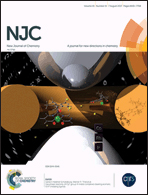Nitrogen doped carbon materials derived from Gentiana scabra Bunge as high-performance catalysts for the oxygen reduction reaction†
Abstract
A strategy for the rational design and synthesis of nitrogen doped carbon as an efficient cathode catalyst for the oxygen reduction reaction (ORR) is developed. A high performance catalyst is obtained directly by carbonization of a bicomponent mixture containing Gentiana scabra Bunge (nature provided biomass) and ammonium chloride (NH4Cl), which are easily available and inexpensive. Gentiana scabra Bunge functions as a carbon source, while ammonium chloride acts as both a nitrogen dopant and a porogen. Furthermore, synergistically tailoring the NH4Cl/Gentiana scabra Bunge feed ratio and the carbonization temperature makes the chemical and physical properties of the as-prepared carbon controllable and thus helps in realising ORR-performance-oriented design and synthesis of nitrogen doped carbon. The synthesized porous carbon (specific surface area of up to 1440 m2 g−1 and 14 wt% nitrogen content) is an ideal material in the ORR that requires high specific surface area, easy accessibility to the active sites through the hierarchical porous system and excellent electrical conductivity. Therefore, the synthesized porous carbon shows high ORR activity with comparable performance to a Pt/C catalyst in both acidic and alkaline solutions, allowing large scale production of carbon materials for practical application in fuel cells.



 Please wait while we load your content...
Please wait while we load your content...